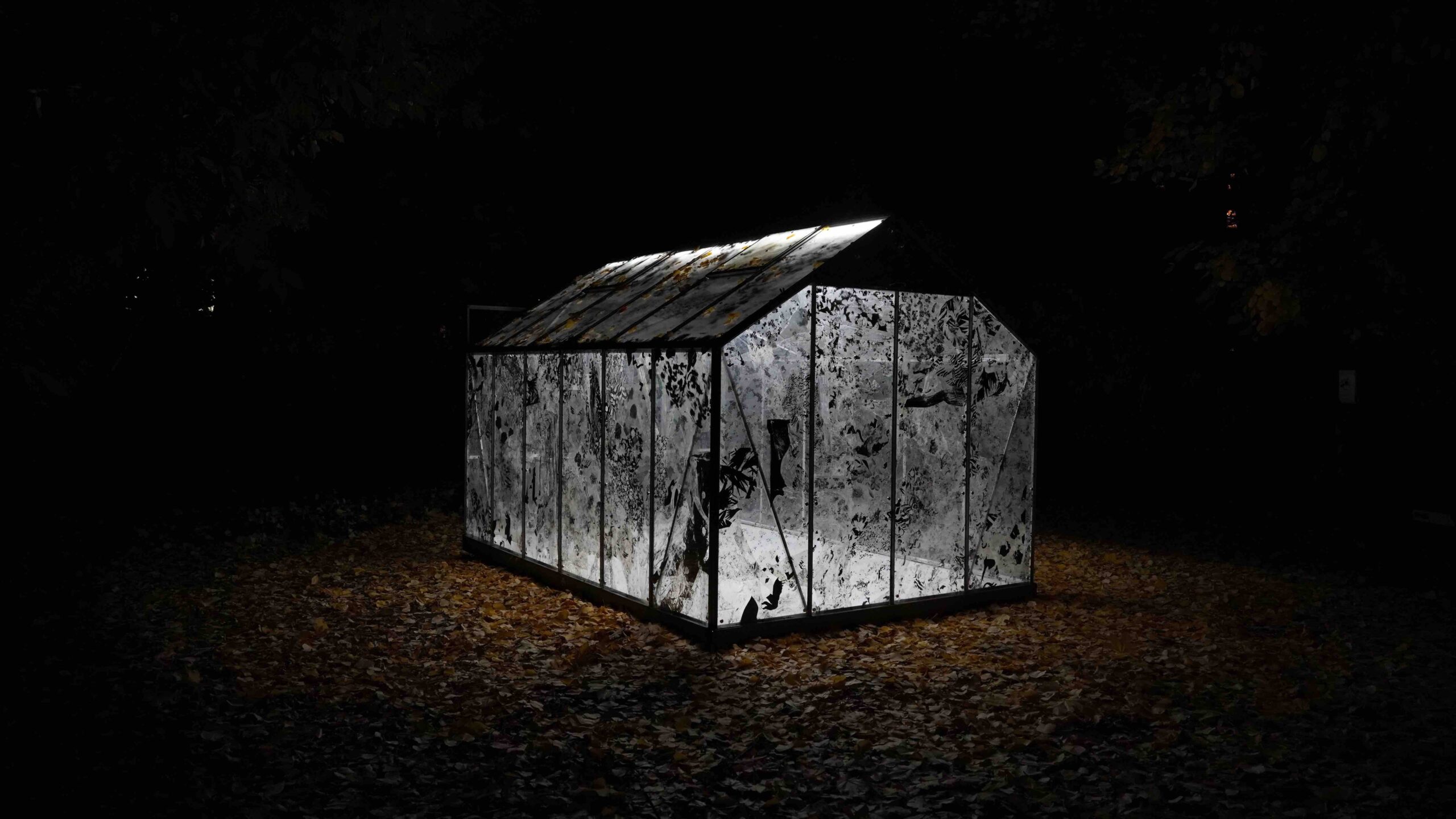Stefano Comensoli (Milano, 1990) and Nicolò Colciago (Garbagnate Milanese, 1988) are two contemporary explorers. Their field of action is the human landscape (industrial, city and natural). The remains of this experience are transformed into connective energies with other objects and other places, giving rise to dialogical works. These energies describe man and his stories, time going by, space that changes and it is often destroyed. But they also anticipate a possible vision of a future. It can be a thought, an aspiration, a reflection that passes through objects and things, to be returned and recovered through artistic practice. They founded the Spazienne project (a place of research and experimentation with Federica Clerici, Alberto Bettinetti and Giulia Fumagalli in 2014), producing both an editorial section and Magazzino (2018), a place of research.

Elena Solito: How was your collaboration born?
Stefano Comensoli_Nicolò Colciago: It was love at first sight. We met at the Master of Visual Arts and Curatorial Studies at NABA, New Academy of Fine Arts in Milan, directed by Marco Scotini. We came from different paths, Stefano got his BA in Graphic Design & Art Direction while Nicolò completed his bachelor’s degree in Visual Arts & Painting.
It was Alberto Bettinetti, professor at NABA, who introduced us and that’s how it all started. As fellow students, we started talking about our vision of arts, our dreams, our reference points and perspectives on the world around us. This sparked a constant debate that never faded.
We started designing and developing ideas since the very beginning. The good synergy between us brought us to investigate more on our vision and shape our research together. We soon became more than just friends, thanks to our work. At the same time, we were building the foundation of Spazienne, the artistic project we created in May 2014 with Federica Clerici, Alberto Bettinetti and Gulia Fumagalli. This milestone brought us closer together, nurturing our partnership and making that initial spark shine even more.
For three more years, we kept working both individually and together, until 2017 when we took one big step forward: Dislivello project, for Dolomiti Contemporanee, was a true challenge. We walked side by side for 400 km, we let go of our fears and merged our visions into one: Stefano Comensoli_Nicolò Colciago. And don’t forget the underscore, it’s important to us, as it puts our two names on the same level, as one single search and archive file name. As we share our thoughts and time, we nurture this partnership and put new energy into it every day, as we strive for freedom, especially the most difficult one to keep alive, the freedom to change.

E.S.: Your exploratory practice starts from disused industrial sites where you take recycled and waste materials. What man produces and forgets is partly recovered through artistic practice. Stefano and Nicolò do you feel a bit like contemporary archaeologists?
S.C./N.C.: It would actually be very interesting to speak with an archeologist, to understand what we have in common, what are the similarities and differences. We definitely don’t feel like archeologists, but we love to explore and do not stop at the surface of things.
Crossing the landscape is a fundamental element of our research, it does not necessarily start from waste but we use our body to feel and explore what is around us. We use harsh materials and we observe how time shapes them and marks them. But they are not the center of our research, we reinvent them and repurpose them, we build a connection to them by studying their complexities, and not only exposing them as relics. We’re rediscovering ourselves through what society produced and then discarded, because in this limbo, where functionality is lost, we find the freedom to experiment.
We always approach materials with respect, even the most abused. We take them directly or try to transfer them with supports or we document our actions with photographs. We are deeply attracted by anything that has a story to tell and can make us travel in time and space. The marks of time and climate factors on the objects originate new visions, new stories we can discover through our senses. That’s how we developed a deeper awareness of marks and shapes, we had been exploring it for a while, somehow subconsciously. The physical relationship between us and the materials is central, we are interested in handling their properties and relating to their story. Our instinctive approach to materials reflects our human presence in our times. We collect the fragments of a time that seems to pass more and more quickly, leaving no possibility to listen and observe its traces. We’re always trying to strike a balance between our critical point of view and the child in us, in a constant dialogue and quest.
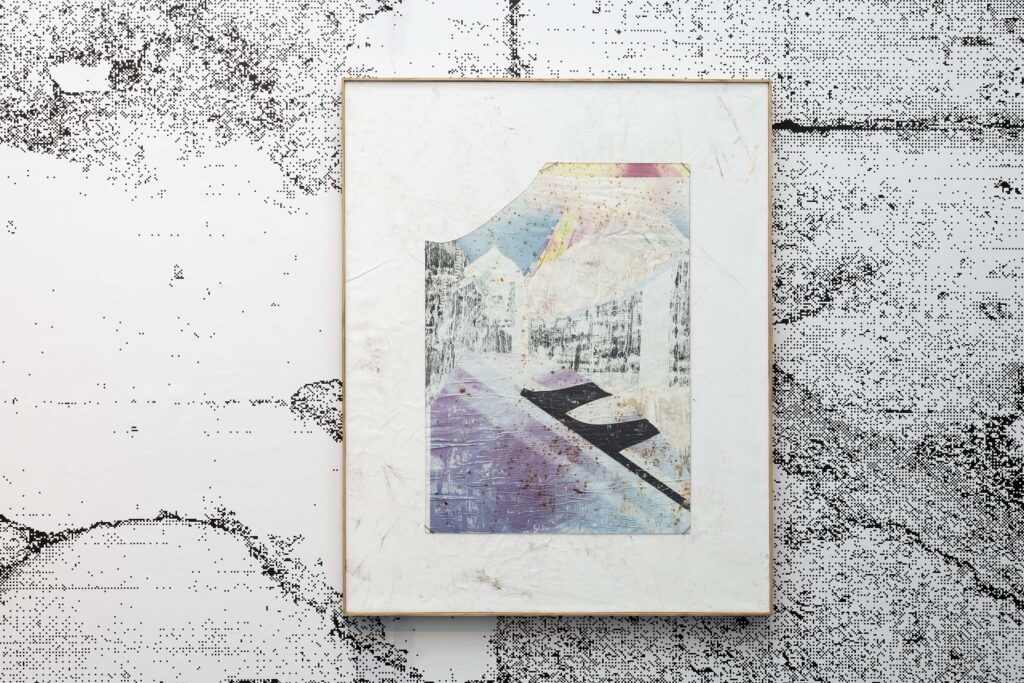
Photo Luca Vianello & Silvia Mangosio. Courtesy Museo Nazionale della Montagna, Mucho Mas! and the artists
E.S.: This is part of a historical context in which there is a need to reconsider man’s relationship with the environment and production processes by adopting forms of circular economies. What is your relationship with the environment? As artists do you feel the responsibility to have a role in raising human awareness?
S.C./N.C.: To answer this question, we need to take a step back and explain why we started working with these materials. It started as a need for us, as artists and human beings, to express our imagination. We felt we needed to be honest and true to our surroundings, and to speak their language.
We are now fascinated by what is normally considered dirty, ugly, dangerous, useless, but the process to get here was not easy. We listened to the landscape around us and realized that it is an enormous expressive resource. The strongest is the need, the more humankind will do to adapt to it: you see it in construction sites, in the suburbs, in the countryside, in abandoned places that now have a new life. In such situations, human beings instinctively invent solutions, exactly as nature does when it grows out of necessity. We have everything we need, we just have to learn to look around us and challenge ourselves. We started our research and our work by forcing ourselves to listen to life around us, and to explore the resources near us, that tell the most about our daily life.
We are fascinated by how history and geography always blend and connect. The materials an artist uses for a work of art are part of their awareness and carry a poetic mark as well as a responsibility. By reducing the resources we use, we reflect on their specificities and their relationship with the space, and we create new exploring dynamics. We get lost, and find new ways, in an increasingly mapped and rigid reality.
The context and environment in which we operate are central to our practice and we feel the responsibility to keep these uncomfortable dynamics alive, to resist a predominant flow, ask questions and bring personal, social and political problems to the surface. Art becomes a vector of critical thinking, will and change.
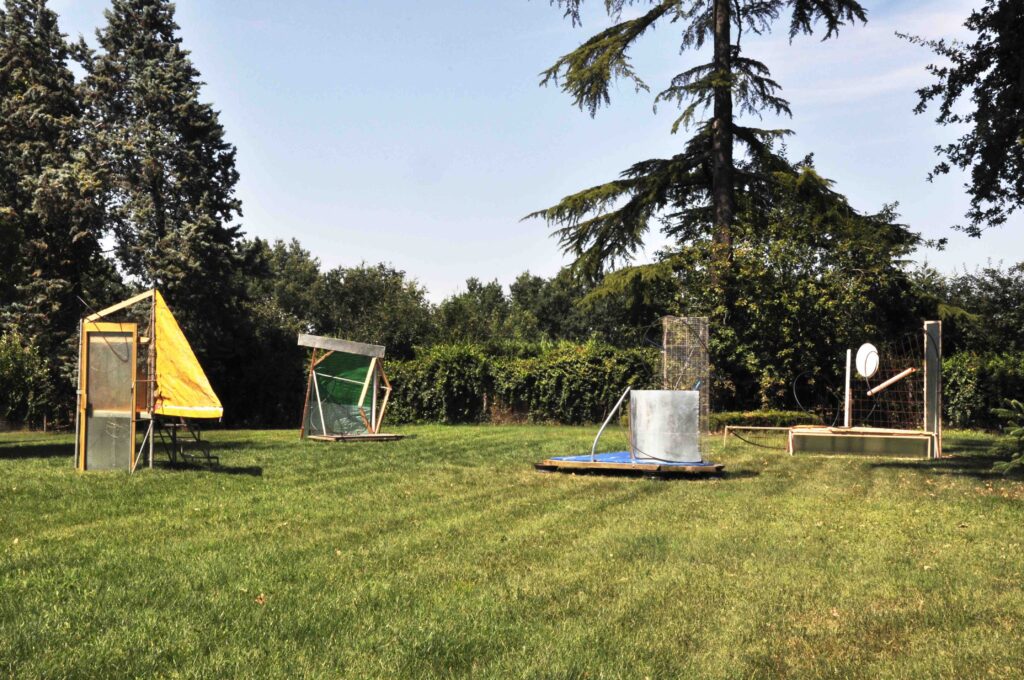
E.S.: The very unpredictability of material (you never know exactly what you will find on the investigated site) suffers from the unpredictability of the final execution.
S.C./N.C.: A fundamental component of being free is failure, that is, moving, seeking, putting oneself in a condition of unpredictability, getting out of your comfort zone. It is something that we have first accepted and then investigated: when the possibility of failure is tangible, then we are overcoming a limit. We are putting ourselves in an area of insecurity and therefore of widening possibilities. This is also why we speak of dialogue with materials, we do not move to “find things” but to seek new situations, to experience the unexpected. Anything else just happens naturally. As we experience the landscape, we gradually learn what it has to give. At first, it’s a surprise and it might not seem “useful”, but then, we learn to find the resources we need. We learn to listen, we stand as fluid bodies in a world of solids. We are constantly looking for those visions of materials and space. We start by imagining shapes, but they change countless times through the process. At each step, we keep asking ourselves if the way forward is the right one, or maybe we take unexpected detours. In a perpetual act of listening and acting, constantly evolving through the process, but never stopping.
E.S.: Your last project was made for a group exhibition (Gianluca Brando, Linda Carrara, Paolo Inverni, Nuvola Ravera & Fabio Roncato) concerning the concept of time: Lontano dal resto at Riss(e) and curated by Davide Dal Sasso. What have you achieved?
S.C./N.C.: “L’ora Che Fugge” is an exhibition project curated by Davide Dal Sasso at Riss(e) space in Varese – founded and managed by Ermanno Cristini. It’s a collective exhibition made up of six solo shows, involving different artists with a personal reflection on dynamic time. Our project – Lontano Dal resto – creates a new space, while reflecting on time. We often work with and within space, and here we took the opportunity to express many facets of our recent research. All the artworks are new and designed to exist together and potentially evolve in the future.
We felt the need to work on those inner spaces that all of us have in common, where time flows so differently than in everyday life, where you can immerse freely in lights and shadows following your emotions.
We tried to create time-altering devices and to do so we started from a dark environment to create situations of slow, all-encompassing, enchanting light. First, we obscured the windows of the space because the works themselves would have produced luminous states. At the entrance to the place, we installed an industrial curtain with vertical bands as a membrane for passing between an inside and an outside. A red diaphragm that creates reflections from the outside and changes the vision of what is inside. The three bodies of work inside the room are composed of: four lightboxes, born from the discovery of some negativoscopes on which we worked with industrial acetates generating bright and colorful collages; next to it, a pulsating sculpture, a sort of mine poised between exploding and exhaustion that emanates a light based on the rhythm of human breathing. And finally, a slide collage projection that is the result of a large finding of screen-printing films in a former textile factory. Research that we have been exploring and reflecting upon for a while now.
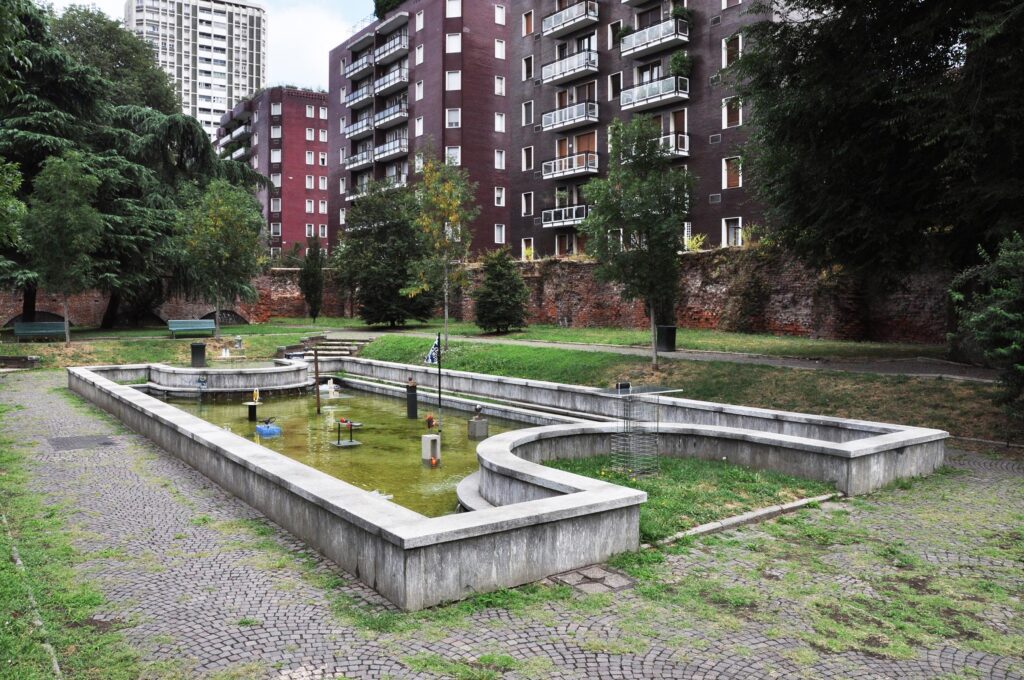
E.S.: The space becomes a material of inquiry when materials are not recovered. I think about Space in Mirror is Closer Than It Appears (a video divided into two episodes in which you explore the forms of an empty space), or Piccolo Esercito (a raid into public places such as gardens, a fountain…), but also Multiverso that you called an exhibition, an environment, an installation.
S.C./N.C.: We love working in space and with space. Finding specific connections with places and their complexity allows for a very powerful sensory immersion. The first thing we do with a place is live it to the fullest and cross it, the second is to reconsider its characteristics or the way of observing it. In Space in Mirror Is Closer Than It Appears we can observe an action of care and reconfiguration of environments in abandoned spaces. Here, research space and exhibition space coincide. This series was born out of a need during the pandemic: we had to face huge limits and decided to use them as a possibility. The working dynamics as we knew them had failed, everything was suspended, but our will to research and create was very present and indispensable for us. So, we looked for those marginal areas where rules could not be applied, a free space where one can create new dimensions. Those forgotten and abandoned areas became our land of possibilities, where action and research coexist, where experimentation and exploration might be at the same time the protagonists and the fields for the action to take place.
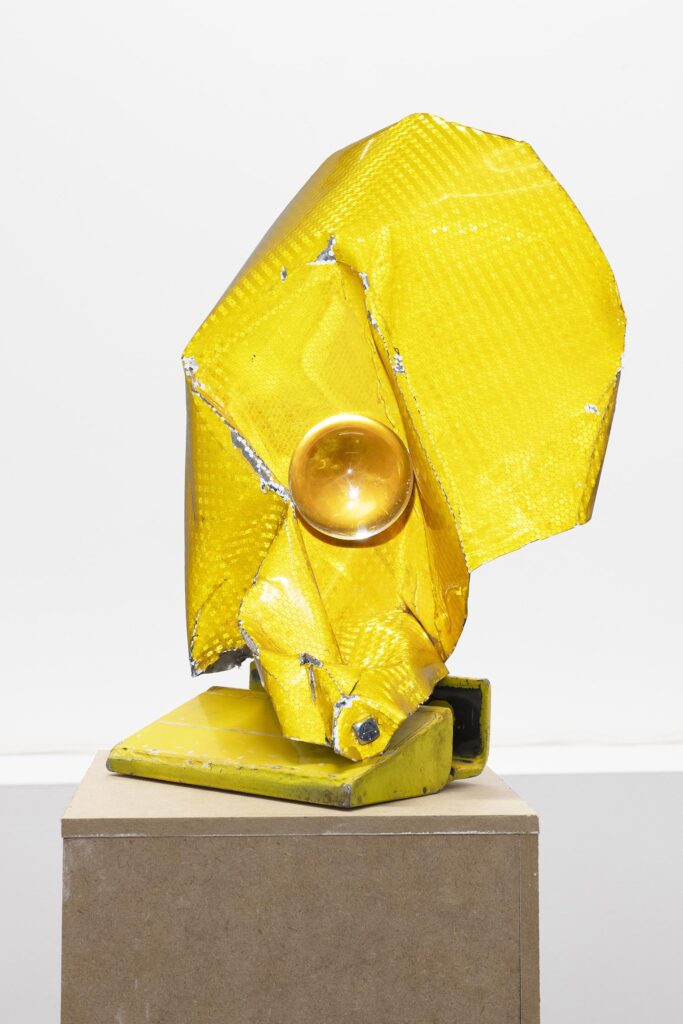
Space in Mirror Is Closer Than It Appears’ final output is a video, showcasing the process of finding, handling and cleaning the materials, up until the work’s finalization and installation. A sort of “coexistence” of multiple dimensions, a Chinese box of situations where, through the video, we enter an entirely different exhibition process that will remain, in some way, forever unreachable and that is left to its relentless process of transformation.
Piccolo Esercito takes place in open and public spaces, as a peaceful guerrilla action through installations. For a whole day, small sculptures are displayed and adapted to the characteristics of the elected space. Annika Pettini has contributed to Piccolo Esercito with written and experiential texts, while Davide Pestillo added his improvised and analogue sound to the performance.
It was a lot of fun to create a recurrent gathering for our community, and at the same time a hitch on someone’s way. We were creating these situations and observing people’s reactions to them, as well as giving the sculptures a chance to connect with the unexpected.
Finally, Multiverso is part of a more traditional exhibition mode, as it was hosted at Megazzino (the exhibition space inside our studio). Here, we wanted to present the space as a hub for endless possibilities and variations. Anything we produced for this exhibition was built within that same space, in order to fit perfectly in the environment and to create a true connection to our everyday actions, as the result of our creative process needs. That is why we created different light conditions, sitting areas, a sound device playing music, and a sort of terrarium. All elements interacted with the artworks on display – sculptures and paintings – playing with multiple complex references and creating ever-evolving emotional and physical states.
E.S.: What is the relationship between share and sound? I think about some of your works such as Incanto e paranoia and Impalcature.
S.C./N.C.: For us, sound means to share, it is an impalpable physical entity, a vision and a whole environment. In the past we worked with several musicians and producers, bridging our work and their vision of it, to find common ground and become part of the melody. Each project is unique and unpredictable, we never dictate a method, we don’t have an end goal in mind, we are always looking for an exchange, a dialogue with sound and its creators. There was also a time when, after collaborating with a producer, he asked us to create the cover image for an audiotapes series. This connection to music and sound is also something we’re interested in, to create a visual image that has a sound to it. It’s a way for us to explore new grounds and find out something new about ourselves and our work. Themes like life, experiences, and failure keep coming back as a joyful experience and as possibilities. The subject matter is constantly changing, flowing, it is never static as it follows our feelings. Every time we work with musicians, we try to create the conditions and the space for this dialogue to happen.
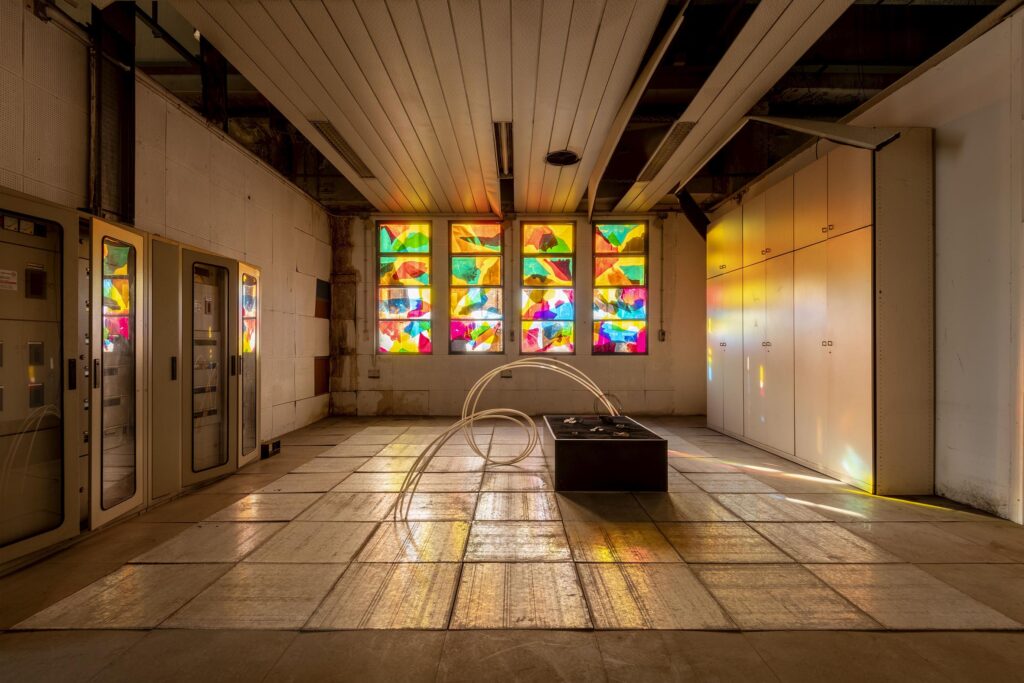
E.S.: You are explorers of contemporaneity in places that man has created and abandoned, or in natural places. Risulta, 2017 (Dislivello) led you into nature. It is here that man finds his roots away from social superstructures, away from the comfort zone. Tell me about the journey.
S.C./N.C.: Risulta is part of a much bigger project that is Dislivello. That’s the project that took us on a true journey, as we left behind our comfort zone and explored the unknown. The idea behind Dislivello was to break free from the ‘teleportation’ mode we’re so used to in modern times, to appreciate a slow and organic movement, to savor the moment. That is why we embarked on a walking journey from Garbagnate Milanese, where our studio is, to Borca di Cadore, where we would stay for an artistic residency. For days on end, we just walked. The slow movements of our bodies inevitably helped us to discover a new perspective on our existence as human beings. We could not skip a step, we could not avoid obstacles or little accidents. Our walking body was there to get them all, and we couldn’t do anything but surrender to them. We certainly learnt a lot on that journey, if not all. Risulta is the resulting work of this whole process, and it’s a shelter in the middle of the woods on the Dolomites. We built it using materials we found in the former Villaggio Eni – where Dolomiti Contemporanee is based. We got there, built the shelter, slept there for one night and headed back. This had always been the idea that we had no final destination. The process was just a way to focus, and then look beyond and go again. To absorb, release, reflect and go. This constant movement of getting closer to a partial destination taught us a research flow that stuck with us since then.
E.S.: What are you working on? What plans do you have for the future?
S.C./N.C.: We have a lot of things going on, and we feel truly grateful and happy for that. Summer has traditionally been a moment of deep research for us, as we take long stretches of time to immerse ourselves deeply in exploration together. Right now, we’re working on a big project starting this summer, with a residency in Ivrea that has to do with the industrial and architectural world of Olivetti. It should conclude with output in 2023.
We’re activating our exhibition space, Megazzino, within Spazienne, to build synergies with other artists and their work we are hosting here. This is our way of bringing together a network of people, in a shared space of artistic experimentation.
With Libri Finti Clandestini and 5X Letterpress we have been working for a long time on an “explorimentation” project for which we envision many different developments and outlets, from collaborations and laboratory activities to a publication, Ruinenlust. Our plan is to make these ideas a reality in the next few months.
We were thrilled to get to know and work with Super Bien! In Berlin and Elisabeth Sonneck. This partnership opened up a whole new range of opportunities and bigger and shared projects connecting artists from Milan and Berlin.
We are never done exploring and learning, nurturing our vision through honest research and experimentation on the ground. Always exchanging ideas and perspectives, and, why not, having fun.


